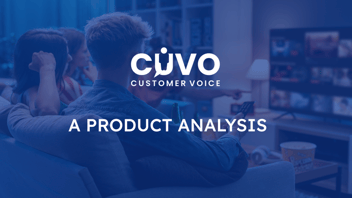Generative AI, also known as creative AI, is a type of AI that can create new and original content, such as images, videos, music, or text, that are not based on pre-existing data.
Generative AI can have several valuable applications in media products. In this blog we’ll consider the significant opportunity to transform how streaming media products can fundamentally operate by improving user engagement and reducing churn.
Enhanced Customer Assistance
In the world of media products, switching costs are so low, so consumer experience is incredibly important to reduce churn. The first 90 day retention of a consumer predicts the lifetime value and can make all the difference. Just imagine an autonomous AI agent that interacts with you right where you are, on your media app, whether it's on a television, smart device, browser, or phone: that responds to your questions, gets comprehensive answers that are intelligent, refines results, and provides inspiration. It speaks to you in the language that’s primary to you, with empathy and relevance.
This is a game changer in increasing user engagement. In addition, the autonomous agent can significantly reduce customer support costs through automated responses, reducing query volume by up to 60%. This is an untapped market opportunity as there isn’t an easy way for people on media products to provide direct feedback other than picking up the phone and calling a support line. The reality is that the majority of consumers never pick up the phone; instead, they simply churn quietly. An autonomous agent that can predict this behavior and proactively communicate with those users can make all the difference.
Ads and Content Personalization
Consumers today are bombarded by the paradox of choice when it comes to media and entertainment. In the small windows of time you get to engage, just imagine a generative AI that gauges your mood based on your likes and dislikes, as well as the time you have available, providing you with content that perfectly aligns with your preferences. And then just imagine if the ads that are generated are so personalized that you can see yourself living an experience that you can identify with it just so deeply, that rather than switch channels or churn, you would click, to purchase.
Generative AI can help media and entertainment companies personalize their content to their audiences' preferences and interests. For example, a streaming service can use generative AI to recommend content to users based on their viewing history and preferences.
Generative AI is poised to power exactly this sort of personalized audience experiences. Delivering custom-fit, compelling audience experiences, will help mitigate subscribers from churning and viewers from abandoning content experiences for competitive platforms.
Content Innovation
Generative AI can be used to create high-quality and original content, such as music, art, and videos. For example, generative AI can create music compositions, movie scripts, or video game environments that are unique and engaging.
Generative AI can help media and entertainment companies explore new and innovative content ideas that may have been difficult or impossible to create otherwise. For example, generative AI can be used to create virtual reality experiences that are immersive and one-of-a-kind.
Generative AI can save time and effort in the content creation process. For example, a production company can use generative AI to generate multiple concept art pieces for a film in a matter of minutes, instead of having to rely on manual sketches and iterations.
Overall, generative AI can bring significant value to media and entertainment companies by enabling new forms of creativity, personalization, efficiency, and innovation in content creation and delivery.
How do we get there:
It’s all about contextual data
All these use cases mentioned above present highly compelling reasons to plug in generative AI into media products. But what does it really take for this to be beyond a theoretical exercise? Generative AI relies heavily on data to create new and original content. To succeed with generative AI, you need a large and diverse dataset that is representative of the content you want to generate. Here are some key factors to consider:
1. Quantity
The more data you have, the better your generative AI model will be able to learn patterns and generate new content. Generally, more data is better, but there may be diminishing returns beyond a certain point.
2. Quality
The quality of your data is crucial to the success of your generative AI model. The data should be accurate, relevant, and representative of the content you want to generate. Poor quality data can lead to inaccurate or biased content.
3. Diversity
Your data should be diverse to ensure that your generative AI model can generate a wide range of content. For example, if you want to generate music, your dataset should include different genres, instruments, and styles.
4. Annotation
Data annotation is the process of labeling data to provide additional information for the generative AI model. Annotation can help the model learn more quickly and accurately by providing additional context or insights into the data.
5. Continual Improvement
As your generative AI model generates more content, it can be used to create a feedback loop. The feedback loop can help you identify new patterns in the generated content, which can then be added to your dataset to further improve your model.
In summary, to succeed with generative AI, you need a large and diverse dataset of high-quality data that is representative of the content you want to generate. Additionally, you should continually improve your dataset to ensure that your generative AI model continues to generate high-quality and relevant content. Specifically for media products, generative AI has the potential to revolutionize the industry on its head.
CuVo is positioned to take the lead in all of these areas. We have a series of products that use generative AI:
- CuVo Automate delivers real-time responses in customer success, to reduce the customer operations cost.
- CuVo Unify correlates tickets across your existing systems, analytics frameworks, and reputation dashboards to escalate alerts that need immediate attention.
- CuVo Discovery provides dashboards that deliver in-depth analysis to uncover new patterns and detect anomalies.
To learn more on our AI/ML offering that reduces churn through generative AI, contact us at info@cuvo.io.io and get started today with our product demos: YouTube Playlist of CuVo Demos

















